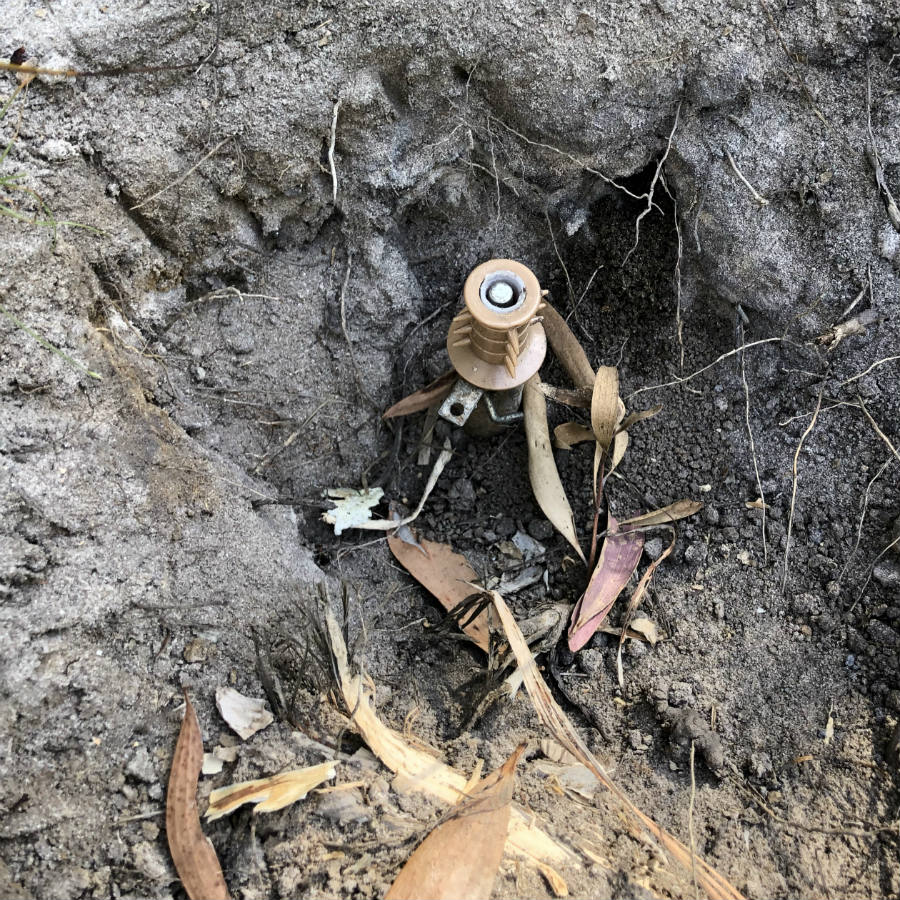Received a notification letter?
As part of each CPE program, council notifies properties within the vicinity of a control area.
The canid pest ejector (CPE) program occurs on council-managed land and private property where the property owner has sought assistance from council to control foxes and wild dogs. As part of each CPE program, council notifies other properties within the vicinity of a control area. There is no direct threat to your pets if you take heed of warning signs and do not allow your pets to roam. All control areas and properties are signed and the signage remains in place throughout the duration of the program.
The CPE Program aims to protect native animals, livestock (including cattle, sheep, goats and poultry) and domestic pets from foxes and wild dogs. The program also aims to reduce the disease and health risks they pose to humans. Read more about wild dogs or foxes and their impacts.
Target species
Fox (Vulpes vulpes) and Wild dog (Canis lupus familiaris).
Schedule
Ongoing: In conjunction with other programs (coastal fox control program or Mary River turtle protection program), or in response to community requests.
Locations
Control activities are undertaken on properties registered to the program across the Maroochy, Mary, Stanley, Mooloolah and Pumicestone Passage catchments. View map of current canid pest ejector properties (PDF, 5MB)
Note: Control activities are not undertaken on public pathways, roadsides, beaches or within 5 metres of a boundary fence, 50m of the centre line of a road, 20 m of permanent or flowing water body or 150m of a residence.
Get involved
If you would like your property to be part of the program please contact council.
Protection methods
Canid pest ejectors
- Canid pest ejectors (spring-activated baiting devices) are used to control foxes and wild dogs in areas of known activity
- Ejectors are baited with Sodium Fluoroacetate (1080) or Para-aminopropiophenone (PAPP), both restricted pesticides. 1080 is considered the most species-specific pesticide for controlling invasive species. Visit pestSMART website for information on Sodium Fluoroacetate (1080) or PAPP.
- A regulatory risk assessment is undertaken prior to placement of canid pest ejectors on any property
- All properties located within 500m of an approved property are notified prior to commencement of control activities
- Warning signs are placed at the entrances to properties where canid pest ejectors are in place
- Control activities are conducted by qualified and experienced invasive animal officers. Officers operate under council’s policies and procedures and in line with Queensland's animal welfare laws
- Canid pest ejectors will not be installed on beaches or roadsides
- Canid pest ejectors will not be installed within 150m of a residence
- Canid pest ejectors will not be installed within 20m of flowing or permanent water body
- Canid pest ejectors will not be installed within 50m of centre line of a road
- Canid pest ejectors will not be installed within 5m of a property boundary.
Note: Canid pest ejectors cannot be trans-located by animals. However domestic pets may be at risk if allowed to roam. It is an offence to allow a cat or dog to roam outside of its property. Learn more about responsible dog and cat ownership.

